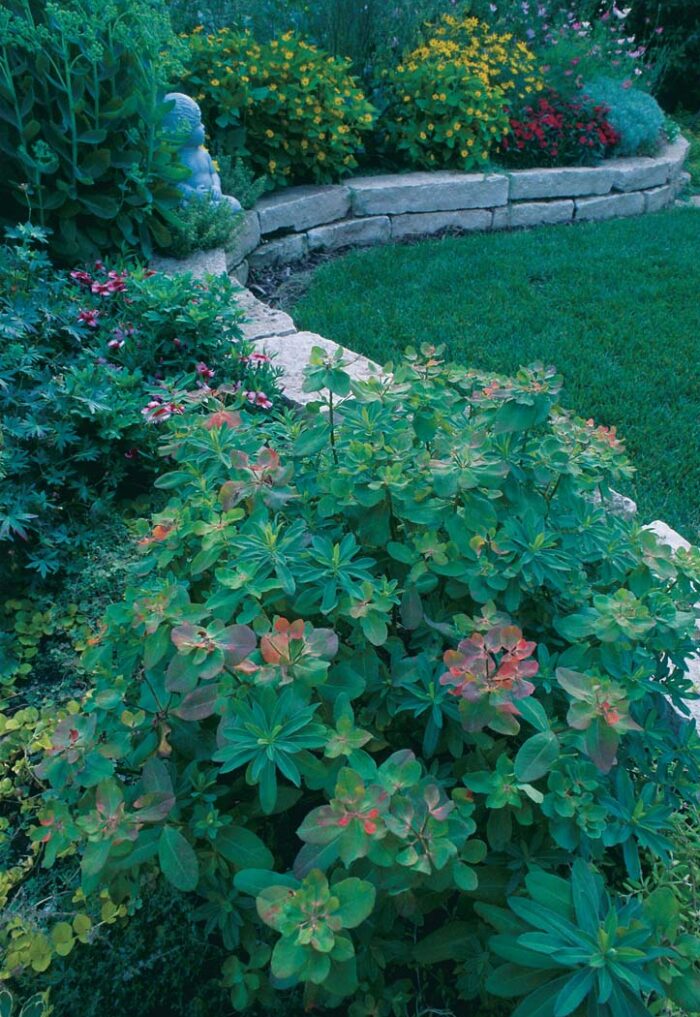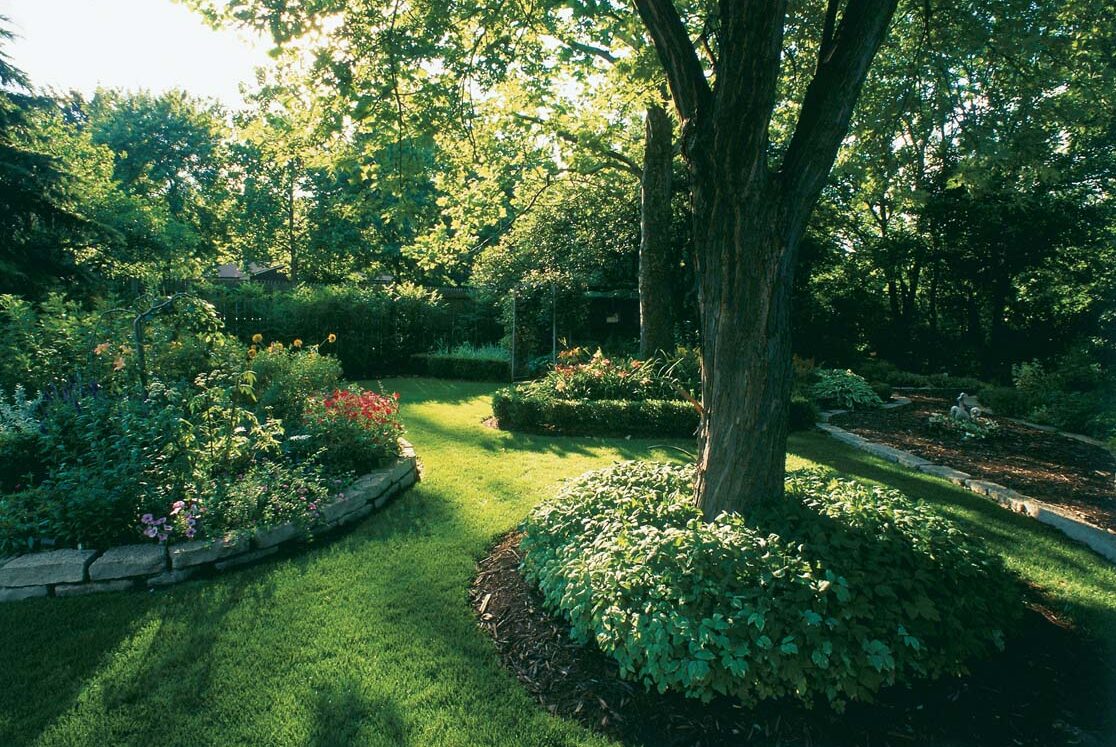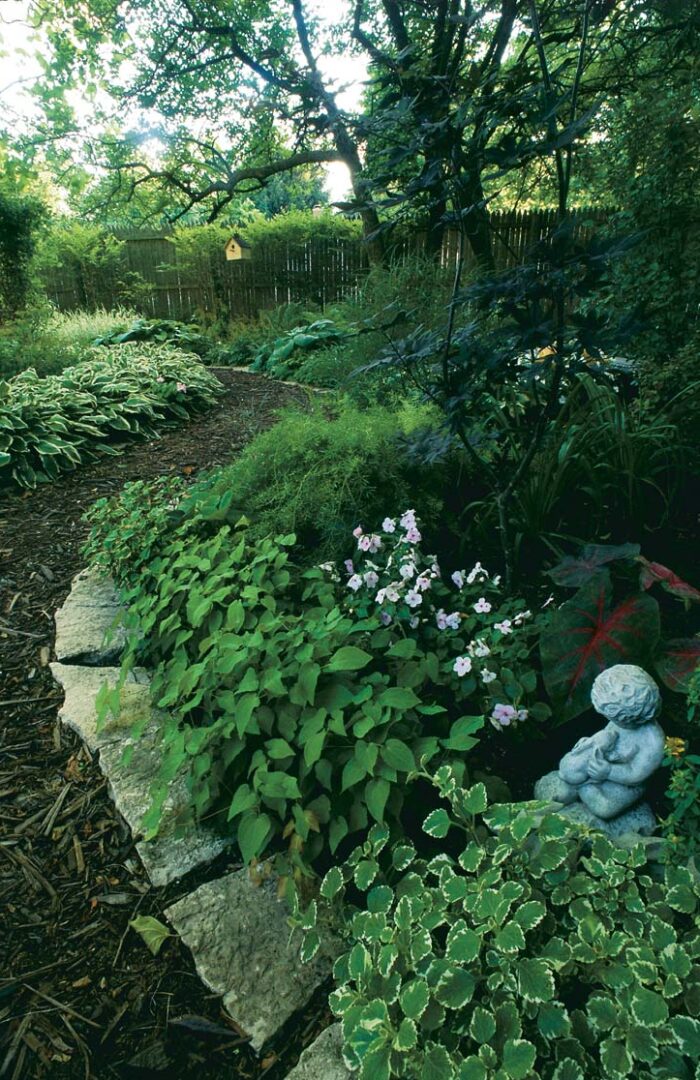Planting a Mixed Sun and Shade Garden
Design a garden to highlight the best of both

To most gardeners, sun and shade conjure up images of separate gardens. But many gardens, including my own, have both sunny and shady areas. It can be a joy to have sun and shade, but when it comes to designing a cohesive landscape, it can also be a challenge.
Learn more: How to determine degrees of light and shade in your yard.
In 1990, when I began work on my garden in Western Springs, Illinois (USDA Hardiness Zone 5), I found that there were areas of deep shade, dappled shade, and soft, filtered shade. In the middle of the yard was a bright, sunny swath, punctuated by two 30-foot-tall spruce trees that cast long shadows—all this in a yard just 90 feet wide.
To unify all of these diverse areas, I employed a series of simple design techniques that draw both your eyes and feet through the garden, oblivious to sun or shade. By repeating shapes, colors, plants, materials, and focal points, the garden gained an overall sense of cohesiveness.
Create a framework for your garden
I began creating my garden much as an artist would a painting. The soil was my canvas, to which I added a frame of flagstone edging. Two layers of 4-inch flagstone surround my palette-shaped perennial gardens, creating a series of raised beds. The first layer is half-buried for stability; the second gives it some height.
Hardscaping materials are also the bones of my landscape, giving it dimension and character any time of year. So the flagstone that frames my raised beds also flanks my garden paths and is used to create patios between the perennial borders. Overall, the effect is that of a single garden edged in stone—even though it encompasses sunny and shady areas.
A descending layer of trees and shrubs provides a pleasing background for the perennials in my sunny garden, just as they might in a painting. The 30-foot spruces anchor each of the beds, while shrubby, purple-leaved plums (Prunus cerasifera ‘Newport’) fill in between them. A shorter hedge of northern bayberry (Myrica pensylvanica) was placed in front of the plums. In the foreground are flowering perennials— the subject of my garden painting. A similar layer of trees, shrubs, and perennials was planted in the shade garden for balance and consistency. The plants are different, but the effect is the same. Even in winter, when the perennials have died back, these gardens are linked visually. The trees and shrubs—both deciduous and evergreen—help me survive the dreary winters by offering beautiful, snow-covered displays.
Use pathways as a guide
Between the flagstone edging, I covered my shaded paths with several inches of oak mulch. This same mulch is used throughout the yard as a ground cover for many plantings, providing yet another visual link. A pathway is a lot like a red carpet; it controls the way a garden is viewed. Straight paths direct your attention to a final destination, while meandering paths add a sense of suspense to a garden. You never know what lies around each bend. That’s why I like to include a winding path whenever I’m working on a wooded shade garden. In my own garden, a path divides the shade into three distinct areas, each with different light conditions. This makes it easier to select and grow plants. The path also makes the shade garden look larger, as though an empty room were filled with furniture.
Repeat colors in flowers and foliage
|
|
|
As a designer, I wanted my garden to be both a teaching and a test garden, so it contains many different plants. For them to look as though they belonged together, I used a unified color scheme. I chose a palette of mostly pastel hues—a gradation of bright and pale tones of pink, lavender, and purple, with soft, subdued shades of blue and yellow. Purple coneflowers (Echinacea purpurea), silvery blue lamb’s ears (Stachys byzantina), pink snapdragons (Antirrhinum majus), and yellow coreopsis (Coreopsis verticillata) are just a few of the annuals and perennials that fill my sunny borders.
However, to use the colors effectively, they had to be repeated in the shade garden. Here, witch hazel (Hamamelis virginiana) and lady’s mantle (Alchemilla mollis) add a touch of yellow, while old-fashioned bleeding hearts (Dicentra spectabilis) display delicate, drooping, pink blossoms. Astilbe (Astilbe × arendsii) offers plumes of pink, white, and rose, and Bethlehem sage (Pulmonaria saccharata ‘Mrs. Moon’) displays bluish-pink blossoms. But since most shade-loving perennials bloom for only a short time, I rely primarily on foliage for excitement and color in the shade garden. My astilbe is also valued for its often rose-colored foliage and, after blooming, the spotted leaves of Bethlehem sage enliven the garden until the first frost. I also appreciate epimediums and caladiums for their colored foliage.
A single plant used in repetition provides yet another visual connection. One of my favorites is the Japanese maple (Acer palmatum). I have different cultivars in sun and shade, but the deep, reddish-purple leaves and lacy foliage are echoed throughout the garden. On each side of the shaded garden path is a curved boxwood hedge. On a larger scale, 15 boxwoods (Buxus microphylla var. koreana) surround a display of daylilies in a sunnier section of the garden. And finally, another boxwood hedge delineates the end of the shade garden, where the lawn begins.
Add focal points—the perfect accessory
Years ago, in my very first landscape design class, my teacher, Mrs. Clemmans, taught me the importance of using focal points in a garden. Whether they are special plantings, hardscaped areas, or smaller structures, these focal points work almost as a magnetic force, drawing your attention to carefully chosen areas in the landscape.
I opted to use focal points in two ways. First, I created patios and provided places to sit for a while in the transitional areas of the garden. I also placed statuary throughout the garden to draw your eye from one point to another. Small stone cherubs, bunnies, and birdbaths are strategically sited to guide you step-by-step through the garden. And the sound of a water fountain in the shade garden tempts you to continue wandering along the winding path in search of its location. Sometimes it’s those little accessories that really pull a garden together.
Having both sun and shade in a single garden may present a design challenge, but I have found this combination of contrasting light conditions offers advantages as well. When the heat of a summer afternoon makes working in the sun unbearable, the shade garden is waiting for me only steps away—cool and refreshing.
Focal points draw the eye from one part of the garden to another. Whether an arbor, a fieldstone patio, or carefully placed statuary, these accessories pull a garden together and give it character.












Comments
Your article helped me a lot, I was asked to write an essay https://customwriting.nyc/ about one beautiful botanical garden. I could read the article to note the details that need to be taken into account when writing the material. Thanks! .
Log in or create an account to post a comment.
Sign up Log in